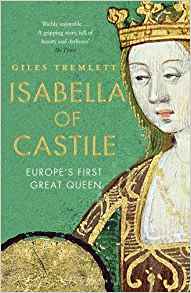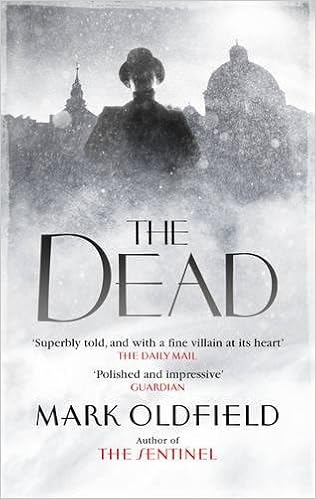 In 1474, a twenty-three year old woman ascended the throne of Castile, the largest and strongest kingdom in Spain. Ahead of her lay the considerable challenge not only of being a young, female ruler in an overwhelmingly male-dominated world, but also of reforming a major European kingdom that was riddled with crime, corruption, and violent political factionism. Her marriage to Ferdinand of Aragon was crucial to her success, bringing together as it did two kingdoms, but it was a royal partnership in which Isabella more than held her own. Her pivotal reign was long and transformative, uniting Spain and laying the foundations not just of modern Spain, but of the one of the world’s greatest empires.
In 1474, a twenty-three year old woman ascended the throne of Castile, the largest and strongest kingdom in Spain. Ahead of her lay the considerable challenge not only of being a young, female ruler in an overwhelmingly male-dominated world, but also of reforming a major European kingdom that was riddled with crime, corruption, and violent political factionism. Her marriage to Ferdinand of Aragon was crucial to her success, bringing together as it did two kingdoms, but it was a royal partnership in which Isabella more than held her own. Her pivotal reign was long and transformative, uniting Spain and laying the foundations not just of modern Spain, but of the one of the world’s greatest empires.
With authority and flair, acclaimed historian Giles Tremlett relates the story of this legendary, if controversial, first initiate in a small club of great European queens that includes Elizabeth I of England, Russia’s Catherine the Great, and Britain’s Queen Victoria.
cover and blurb via amazon
~~
I love Giles Tremlett’s work so I was greatly looking forward to this book. Isabella of Castile is 600 pages of history, kindly broken up into a timeline of an extraordinary life. Isabella is a well-known figure, and so there are persistent stereotypes of her character, ranging from a vicious religiously-driven invader, to courageous and fierce woman, to powerful and saintly queen.The kingdom of Castile had seen its fair share of powerful queens in its time, with varying results, so when Isabella stepped up to rule, not as a regent wife, but on her own, things were bound to get hectic and history, always written by men, has varied in its narrative.
The book opens with Isabella’s early life in the court of her much older half-brother, Enrique IV. Both Enrique and their father, Juan II, were not great rulers, so Castile was in chaos, and Enrique had ruled the same as his father – weak and easily influenced by others. So, when Enrique died, there was little in the way of support for Isabella, either from royalty, wealthy land-owning grandees or the church to support a female ruler. But Isabella was determined to rule, and rule on her own terms, becoming a fierce leader that would be remembered for all time.
Europe was ready to emerge from the middle ages. Plague was wiping out so many people, so many that the illness was contributing to the feudal system collapsing. Ottoman rulers were conquering and Castile was hoping for Christianity to be their great saviour in a difficult time. The land known as Spain today was filled with Christians, Muslims and Jews, and the notion of a stable mix was a pipe dream.
Even before Isabella was a queen, she was a princess with a plan. There are writings of romance between her and the princely heir of Aragon named Ferdinand, Spain’s other great Christian power. But Isabella married with a pragmatic approach, and relished in the display of her bloodstained bed sheets after the wedding. People hated Enrique and his new rules; Isabella was a traditionalist. While Isabella and Ferdinand were planning their alliance while producing heirs, another Spaniard named Rodrigo Borgia was trying to get onto the papal throne, an ally to Enrique. Spain’s kingdoms were in turmoil on levels often ignored in the story of Isabella’s life.
Isabella politely grieved her awful brother when Enrique died in 1474, and Isabella, in her magnificent walled city of Segovia, was officially made the queen in her own right. It was not long before Ferdinand became king in Aragon. Many thought Ferdinand could not rule his kingdom as well as his wife’s, and she was not capable of doing so alone. Only months after their crownings, war came to the southern areas, which Isabella was able to command on her own. Yet Isabella also found time to bear a son and heir to two kingdoms in 1478. Isabella and Ferdinand had much to control over an enormous area and were making their mark in doing so.
The book delves deep into the southern wars before Isabella and Ferdinand conquered Granada in 1492, exiling the Muslims from Al-Andaluz and creating (approximately) the Spain we know today. Then came the Spanish Inquisition to expel all the Jews, the Muslims who had been forced to convert, and Columbus’ missions to what was the Americas rather than Asia. Isabella gave birth to five children, and suffered the event of the death of her eldest son and heir, Juan, in 1497, meaning Juana (yes, the mad one) was the ruler of Castile, Aragon and Al-Andaluz, now all one nation. Juan’s pregnant wife miscarried the precious child which would have inherited. Isabella had seven children, but one was a stillborn son early on, and another loss of was a twin sister to another daughter who survived. Two of Isabella’s daughters, first Isabella then Maria, married the King of Portugal, and Catherine famously married Arthur Tudor as the century changed. Isabella died of illness in 1504, after enduring a number of years suffering from personal loss.
Isabella was a powerful ruler, understood the limitations of her gender (by their standards), had her name blackened by historians and Italian haters, and was pious yet vicious with her Inquisition. She raged when her husband strayed – frequently – and took no lovers of her own. Isabella’s story is all about power, and she was truly worthy of the opportunity to rule. Thank you to Tremlett for putting all of Isabella’s story together, not just the well-known parts. No part of any book written by this author will disappoint.


 In 1474, a twenty-three year old woman ascended the throne of Castile, the largest and strongest kingdom in Spain. Ahead of her lay the considerable challenge not only of being a young, female ruler in an overwhelmingly male-dominated world, but also of reforming a major European kingdom that was riddled with crime, corruption, and violent political factionism. Her marriage to Ferdinand of Aragon was crucial to her success, bringing together as it did two kingdoms, but it was a royal partnership in which Isabella more than held her own. Her pivotal reign was long and transformative, uniting Spain and laying the foundations not just of modern Spain, but of the one of the world’s greatest empires.
In 1474, a twenty-three year old woman ascended the throne of Castile, the largest and strongest kingdom in Spain. Ahead of her lay the considerable challenge not only of being a young, female ruler in an overwhelmingly male-dominated world, but also of reforming a major European kingdom that was riddled with crime, corruption, and violent political factionism. Her marriage to Ferdinand of Aragon was crucial to her success, bringing together as it did two kingdoms, but it was a royal partnership in which Isabella more than held her own. Her pivotal reign was long and transformative, uniting Spain and laying the foundations not just of modern Spain, but of the one of the world’s greatest empires.

